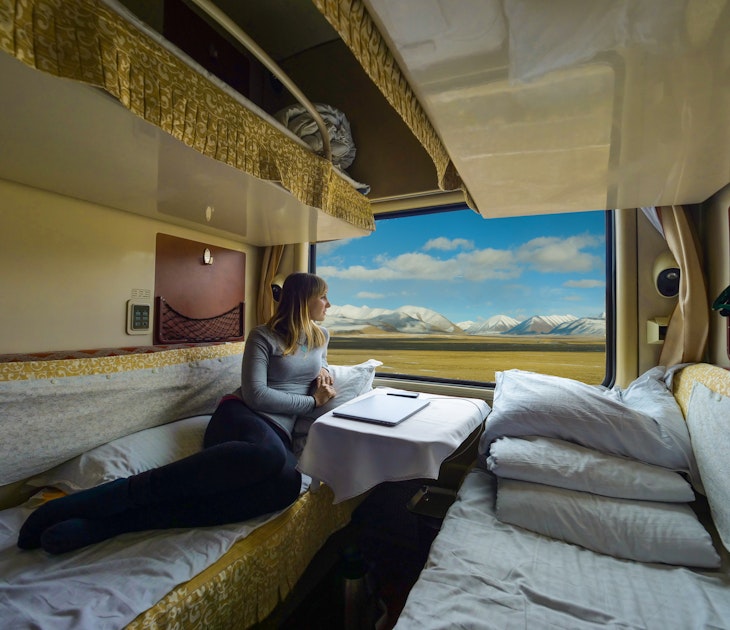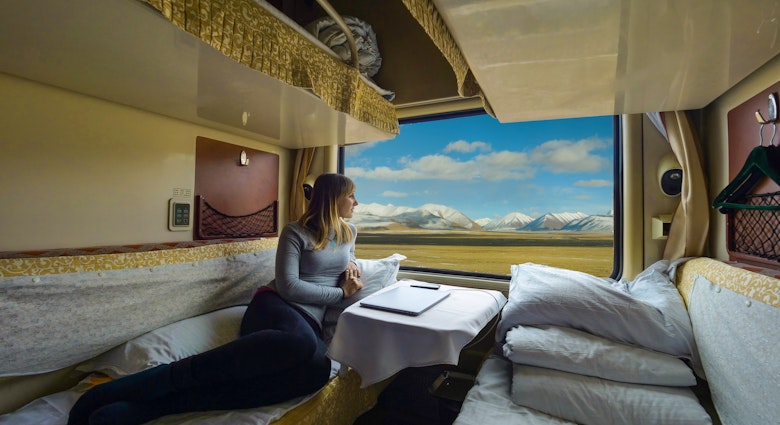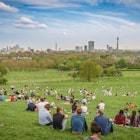London is a sprawling city of over nine million people. With its combination of Roman walls, Victorian development, post-WWII rebuilding and pockets of ongoing regeneration, it's a jumble of roads, Tube and train lines, and definitely not the most intuitive city to navigate.
However, with apps, good mapping, signage and a bit of patience, it's possible to visit almost all of the city via public transport. From train companies to Transport for London, here's everything you need to know about each mode of transport and the all-important ticketing system.

The Tube (the London Underground) is the quickest and easiest
The London Underground, or "the Tube," is the city's subway running across 11 different color-coded lines, with only about 45% of the Underground network actually operating underground. Despite the never-ending upgrades and engineering works requiring weekend closures and escalators out of action, the Tube is overall the quickest and easiest way of getting around the city. It is also usually the warmest place to wait for your transport in winter, except on those rare above-ground Tube stations.
Be aware though: some stations, most famously Leicester Square and Covent Garden, are much closer in reality than they appear on the Tube map, and going underground to travel between them will take much longer than simply walking between them.
Tip for using the Tube for sight-seeing: The Piccadilly Line stops at some of London’s key sights and neighborhoods – Piccadilly Circus, Covent Garden, Hyde Park Corner and Knightsbridge – and it runs from Heathrow's airport terminals. It's a good Tube line to base yourself near.
Catch the Night Tube on Friday and Saturday nights
The Tube runs roughly 5am to 1am, although when your last train departs does vary by line and the day of the week.
Several lines (the Central, Jubilee, Northern, Piccadilly and Victoria lines) run all night on Friday and Saturday to get revelers home (on what is called the "Night Tube"), with trains every ten minutes or so (and off-peak fares).
London's red buses (and the best sight-seeing bus route)
London's ubiquitous red double-decker buses afford great views of the city, but the going can be slow thanks to traffic jams and dozens of commuters getting on and off at every stop.
There are excellent bus maps at every stop detailing all routes and destinations served from that particular area (generally a few bus stops within a two- to three-minute walk, shown on a local map).
Bus services normally operate from 5am to 11:30pm. Many bus stops have LED displays listing bus arrival times, although downloading an app such as Citymapper to your smartphone is the most effective way to keep track of when your next bus is due.
Top tip for taking the bus: Bus Route 15 is no longer served by heritage Routemaster buses but is still a useful route for tourists, connecting the Tower of London, St Paul's, the Strand and Trafalgar Square.
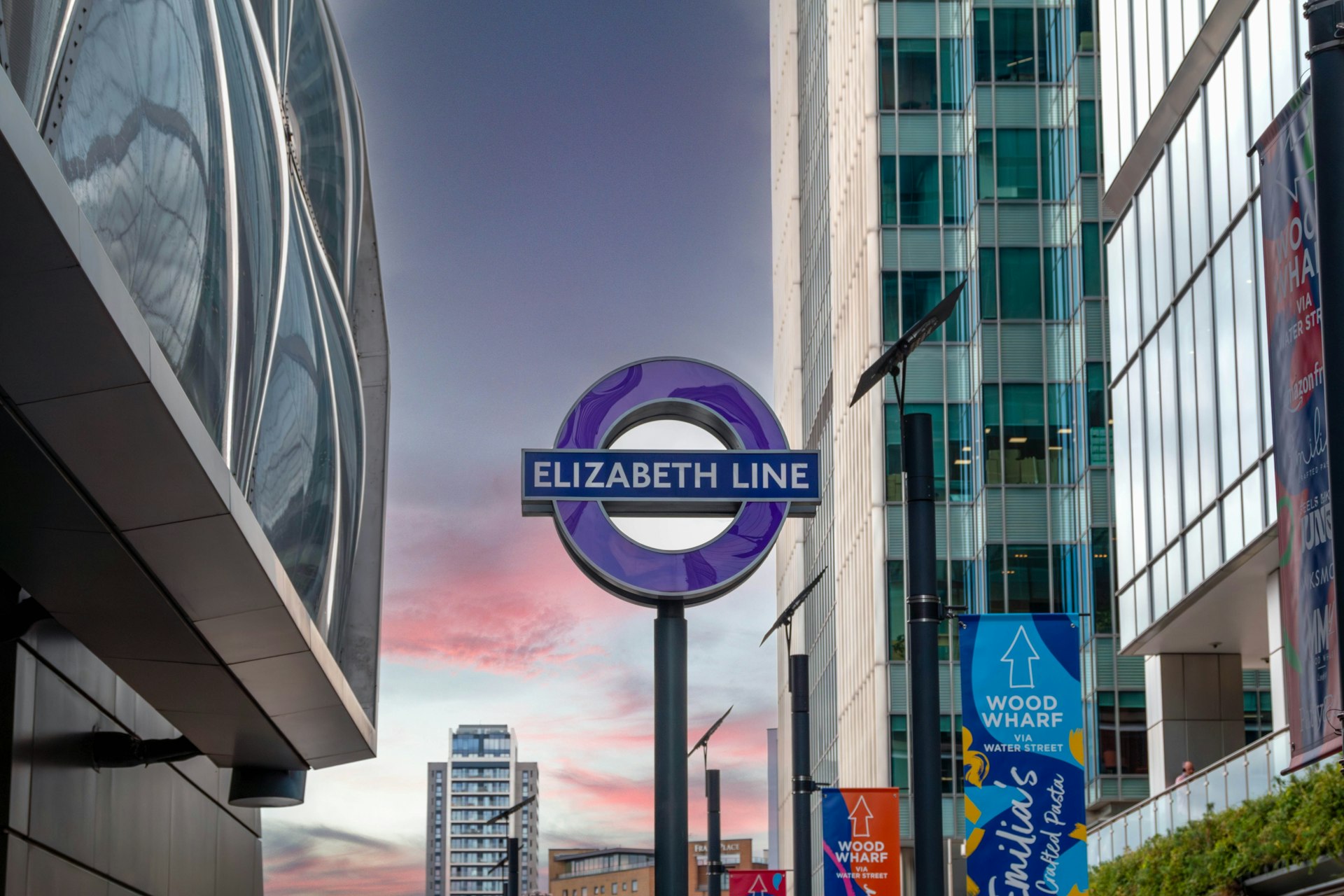
The Elizabeth Line
London’s shiny new "purple" line, connecting towns as far west as Reading and as far east as Shenfield to central London via hubs like Paddington, Liverpool Street Station and Tottenham Court Road, is now open for business.
The line also offers a quicker (although more expensive!) route between Heathrow airport and central London.
Getting around London by foot
London is too large to realistically cover on foot, but once you're in an area of interest, you can't beat walking for proper neighborhood exploration. A good map or GPS is recommended, as London's winding streets can quickly disorientate. Bridges cross the Thames at regular intervals, and there are two pedestrian tunnels beneath the river: one at Greenwich and one at Woolwich.
If you're exploring London in winter, wrap up with a warm hat, gloves and scarf. In central London, an umbrella is a liability on narrow footpaths; you're better off wearing a waterproof coat with a hood. Ice and snow are not uncommon in the depths of winter, so watch for slippery streets in the mornings.
Another key hazard for walkers in London can be cyclists, or rather pedestrians are a worry for them. Looking out for cars when you cross the road goes without saying, but in London, many streets allow cyclists to ride against a one-way driving system on "contra-flow" lanes. This means you need to look both ways before crossing roads, especially as you won't hear a bike coming!
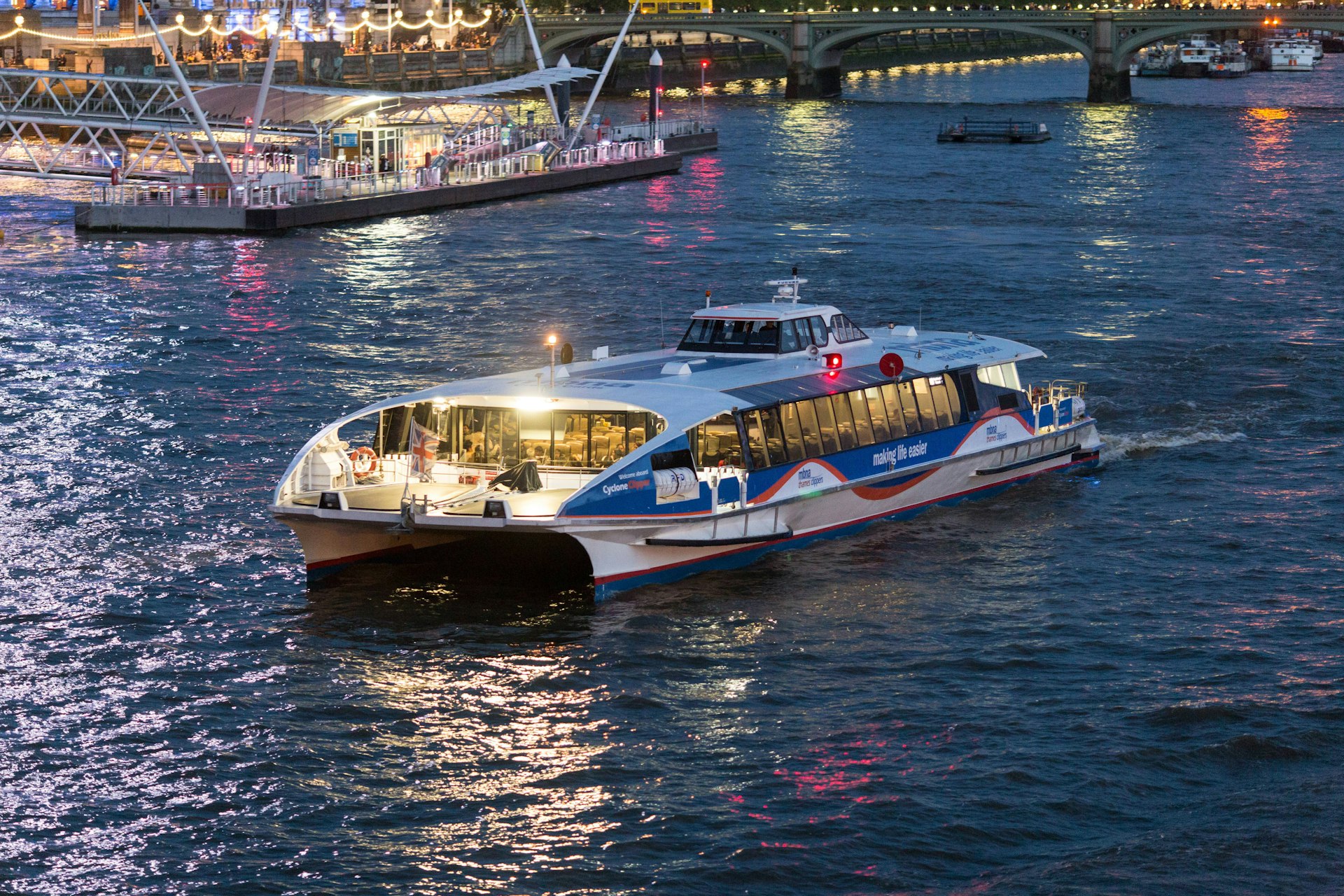
Better on a boat on the Thames
Several companies operate along the River Thames; only Uber Boat by Thames Clippers really offers commuter services, however. It’s fast and pleasant, and you’re almost always guaranteed a seat and a view. Thames Clippers boats run regular services between Embankment, Waterloo (London Eye), Blackfriars, Bankside (Shakespeare's Globe), London Bridge, Tower Bridge, Canary Wharf, Greenwich, North Greenwich and Woolwich piers. Tickets can be bought at the piers, or pay-as-you-go with your Oyster or Contactless card (see below for more information on paying fares).
Cycling is a surprisingly quick way to cross London
Cycling is generally a great way to get around the city, although city traffic can be intimidating for less-confident cyclists – it is important to keep your wits about you. The city has tried hard to improve the cycling infrastructure, by opening new "cycle superhighways" for commuters and "quietways" which are back street cycle lanes for leisure cyclists. The public bike-hire scheme Santander Cycles is particularly useful for visitors with bike-hire docks throughout the city. It costs £2 for unlimited journeys up to 30 minutes and £2 for each additional 30 minutes. Download the app to find the closest bikes and where there are spots available to drop off your bike near your destination. Cycling is also an excellent option for exploring parks and along the Thames.

London's black cabs and other taxi options
Licensed black cab drivers have "The Knowledge", acquired over three-to-five years of rigorous training and a series of exams. They are supposed to know 25,000 streets within a six-mile radius of Charing Cross/Trafalgar Square and the 100 most-visited spots of the moment, including clubs and restaurants.
Cabs are available for hire when the yellow sign above the windshield is lit; just stick your arm out to signal one. Fares are metered, with the initial charge of £3.80 rising by increments of 20p over distance traveled or time taken, which varies depending on the tariff being used. You can pay for your journey with a credit or debit card or cash.
Minicabs (private hire cars) are cheaper alternatives to getting a black cab, but they must be booked in advance through a cab office or an app and cannot be hailed on the street. Fares are set in advance rather than metered.
Ride-share apps are also in operation in London, although their introduction and impact on the city, from undercutting traditional black cabs to accusations of increased car congestion, is still hotly debated by locals.
Top tip for taking a black cab: Despite the name, not all of London's black cabs are black! They are broadly all shaped the same, though, and will have a yellow sign above the windshield that says "Taxi."
Driving a car in London
As a visitor, it’s very unlikely you’ll need to drive in London. Much has been done to encourage Londoners to get out of their cars and onto public transport (or on their bikes), and the same disincentives should keep you firmly off the road: the additional Congestion Charge (CC) and Ultra Low Emission Zone (ULEZ) fees, extortionate parking costs, the high price of fuel, fiendishly-efficient traffic wardens, and ubiquitous CCTV cameras recording cars parked (even momentarily) on double yellow lines or not giving way when they should... it's probably not worth it.
Riding above the Thames on a cable car
The Emirates Air Line is a cable car linking the Royal Docks in East London with North Greenwich some 90m above the Thames. The journey is brief and rather pricey, but the views are stunning. The Air Line is step-free, and the cable cars can accommodate most motorized wheelchairs.
The DLR (Docklands Light Rail)
The DLR, or Docklands Light Railway, is a driverless train network operating in the eastern part of the city. It's likely you'll take a ride on it if you're heading to the Emirates Air Line cable car or arriving/departing via London City Airport. It's a winner for travelers with children, who like to pretend they're driving the train from the front carriage.
London Overground and the suburban train network
The Overground train network is part of Transport for London and operates mainly beyond the center of London (although some lines do pass through Zone 1 so pay attention if you're trying to avoid Zone 1 fares). In February 2024 the sprawling Overground network was rebranded into six separate lines, named to celebrate the capital’s modern history and diversity. Not all Londoners were impressed by the names.
There are various private companies operating trains in London that run out to the suburbs. The train network is particularly good for any day trips out of London, but pay attention to which operator you've booked train tickets with as more than one company will depart from the same station.

Accessible transportation in London
London is a frustrating mix of inconsistent user-friendliness for travelers with access needs. All tram stops, the Emirates Air Line (cable car) and DLR stations have step-free access, as do all Thames Clippers and most piers (the exceptions are Cadogan Pier, Wandsworth Riverside Quarter Pier and London Bridge City Pier). However, only around a quarter of Tube stations and half of Overground stations have step-free access. This means that if you need to go through an interchange on the Tube network, you may find yourself facing an unexpected flight of stairs. There is often a gap between the train and the platform to contend with, as well. Careful planning and notification of a staff member are recommended before you board a train.
Buses are a much better bet: all can be lowered to street level when they stop, and wheelchair users travel free. Wheelchair users enter through the middle doors and have priority use of the wheelchair space over stroller users. All black cabs are meant to be wheelchair-accessible, but power wheelchair users should note that the space is tight, and headroom can be insufficient.
Guide dogs are universally welcome on public transport. Pavements are generally in good repair, pedestrian crossings relatively frequent and well-placed, and curb cuts sufficient not to leave you stranded. The further you get from the center of London, the more likely it is that you'll have the occasional issue with a missing curb cut.

Transport passes, tickets and fares
Transport for London operates the integrated transport network in the city and is the best source for up-to-date travel information, including timetables and fares. Children under five travel free with a fare-paying adult. Use the larger automatic gates to pass through with children, strollers, wheelchairs or luggage.
How to pay
You can buy tickets for single journeys at ticket offices and self-service machines at most stations, but it's cheaper and much more convenient to either use Contactless, an Oyster card, or a mobile payment with a smartphone (unless you're paying overseas transaction fees).
Contactless: This is any credit or debit card that allows for contactless payment. You hold it near the yellow card readers at ticket barriers for the Underground and rail systems to mark the start (and end) of your journey. This is referred to as "touch in, touch out." The cost of the journey will automatically be deducted from your account.
Oyster cards: These are pre-paid reusable cards that can be topped up with funds either at a ticket machine or online. They are sold at most Tube/train stations and many newsagents (£5 charge) and follow the same "touch in, touch out" system.
Bus journeys: Buses are all cash-free, meaning you must either have a ticket in advance or pay with Contactless or an Oyster card when you board. You only need to "touch in" at the start of your journey. You will pay a flat fee no matter how long you are on board.
Travel zones for Tube and rail
The city's Tube and rail systems are divided into zones, radiating outwards from Zone 1 in the very center to Zone 9 as the outer section in Greater London to the north (it goes as far as Zone 6 to the south). Fares are capped, so providing you use the same card/device throughout your day and travel within the zones system, you'll pay a reduced Travelcard rate.
If you're taking a train beyond the London zones, perhaps for a day trip to the coast or farther afield, you will need to buy a separate train ticket.

